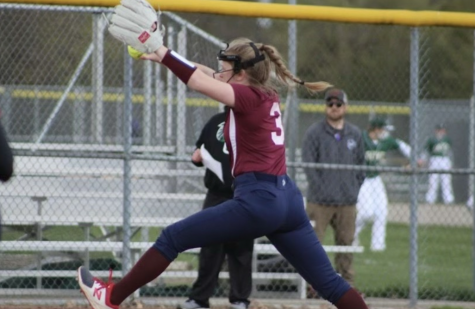Students Walk a Tightrope Between School and Sports

Grace Debrecht
Being a high schooler is no simple task. From schoolwork to social life, to family, it can be hard to balance it all. With all of this pressure, why do high schoolers decide to participate in sports as an extracurricular activity? Are sports just another component of our college resumes? Or is there something more meaningful that students can earn from them? But more importantly, is there a way to balance the responsibilities that come with each?
Studies have shown that sports positively impact one’s mental health by releasing endorphins and dopamine. These hormones are responsible for the feeling of happiness and reducing anxiety. With the stress of homework, projects, essays, and much more, sports can be an outlet to reduce this burden. However, they can also add to the stress. During sports seasons, practices are incredibly time-consuming with hours of practice every day after school. For athletic students, finding a balance between schoolwork and sports is a nearly impossible task, but some students have tackled this endeavor. To investigate how student-athletes can effectively balance these responsibilities, I turned to several BHS athletes and asked them how they manage it.
Girls varsity softball player, junior, Lily Downes has her daily game plan. Berkley High School girls’ softball season is in the spring, but Downes plays on a travel team year-round.

“I play around eight hours a week,” she explains. “Sometimes I get overwhelmed, especially with my AP courses and two-hour practices most days. But I also try to make time to attend school sports events and spend time with my friends.”
Downes has a few different mechanisms that help with her stress. “I cope by using my time wisely before practice, and I try to use lunch to get homework done, so I do not cram it in later. I also love to use a planner to organize my assignments just so that I know the upcoming due dates and test schedules.”
Downes explains that these strategies help maintain her good grades and allow her the luxury of free time.
Girls varsity tennis player, senior, Annabel Bean, shares how she copes. During the spring season, Bean plays around twelve hours a week.
“I definitely feel overwhelmed with school and my sport because, after practice and matches, I don’t have a lot of time to do the schoolwork that I need to do like completing homework, studying for tests, and working on projects.”
Although the stress is a lot to handle, Bean has some tips and tricks for managing her time wisely.
“One way that I cope with this is by doing my homework right when I get home from school –before practices– and working on it more right when I get home. You have to strategically use the time that you have. If you have a reduced schedule, use the free hour to work on homework. If you have time before practice, start working on your assignments.”
Girls varsity soccer player, junior, Grace Debbrecht shares her time management approach. “I play around fifteen hours a week and juggling sports and homework is extremely difficult. But, I’ve realized that it is really important to reach out to my teachers when I am struggling.”
During soccer season in the spring and club season year-round, Debbrecht tries her best to develop the most effective plan to have the lowest amount of stress.
“I try to organize my time and plan it down to the hour for what homework assignments I will do at each time.”
While getting homework done, it is also critical to map out some free time for yourself. Debbrecht reveals that she, “always build[s] in at least an hour to just relax and watch TV.” Although schoolwork and sports are a priority, the number one priority should be mental health. Having downtime for self-care is imperative to be a healthy student.
It is crucial that students learn these strategies so that they can prosper throughout high school and eventually throughout their professional adult life.

Hi! My name is Julia Heller! I am the Editor-in-Chief for The Spectator at Berkely High School. I am a Senior, and this is my fourth year on staff. I decided...







Kary Pasanen • Oct 30, 2021 at 12:14 pm
Love the article as a parent of a student athlete and listening to the struggles of “work-life” balance for our kids. None of them are alone and the struggle is real. Hope the article ia read by all the student body. It would be of great value for them to appreciate and respect one another. Also would have been good to hear from a male student – there are male student athletes also.